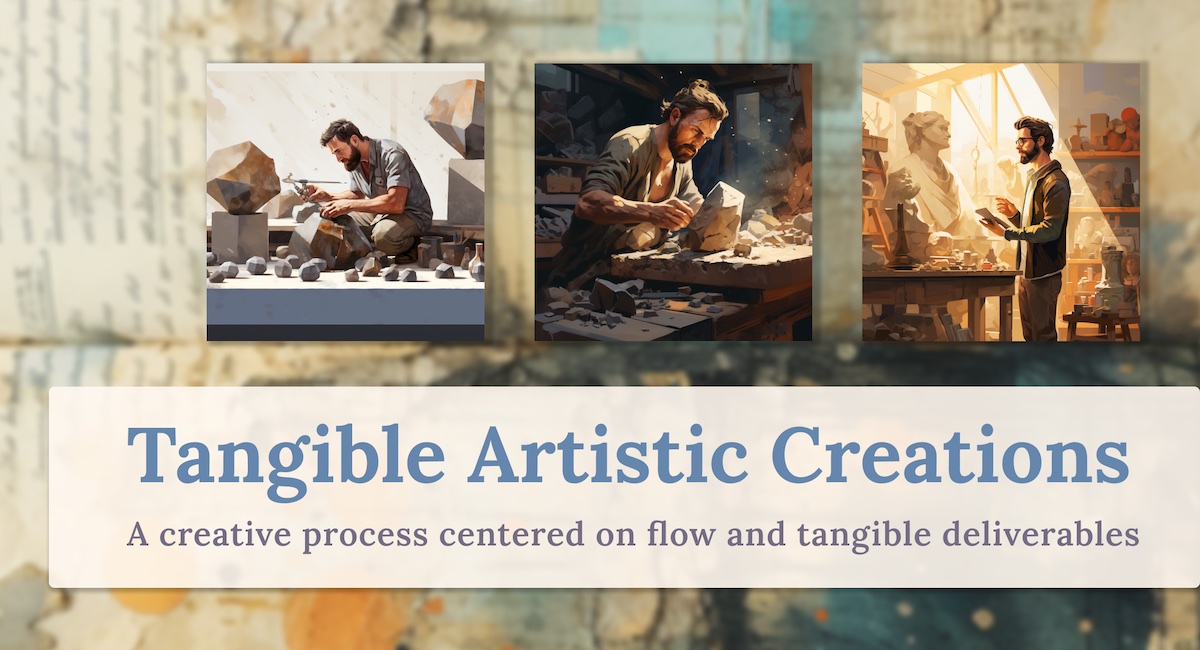Johann Sebastian Bach, Stephen King, David Bowie, Pablo Picasso, Brian Eno – what links these creative giants? Prolific output.
Besides their recognition as leaders in their artistic fields, they all shipped lots and lots of art. They created and released hundreds or, in some cases, thousands of artist works over their lifetimes. Consider Johann Sebastian Bach, with 1127 surviving compositions and likely more lost to time, or Steven King, authoring 65 novels, five non-fiction books, and over 200 short stories.
Underlying public creative output is more often than not an even greater and more prolific private output. While great art is not merely a question of quantity, the path to artistic greatness is in many notable cases paved with prolific production, both public and private. Successful, output-oriented artists have a process, routine or some combination that drives them to generate new ideas, quickly start working on it in a tangible way and continue to re-work until it is finished (or abandoned).
Throughout every phase of the creative journey, artists should relentlessly strive to give form to their ideas and visions.
To fully harness our creative potential, artists and creatives must actively cultivate and follow-through on a creative process that results in Tangible Artistic Creations (TACs) – tangible, meaningful, and completed works that bring something real into the world and that enable you to work, re-work and invite refinement over time.
Artists and creatives should pursue a creative process centered on tangible outputs. For writers, this entails crafting paragraphs, hitting word counts, weaving together chapters, and sharing blog posts. For me as a music producer, it’s song demos, melodies, synth patches or end-to-end song productions. Depending on your chosen medium, your artistic process thrives when you bring forth tangible creations.
Unfortunately as artists we are human beings too, and various mental hurtles or cognitive biases can prevent us making this happen. We struggle to get started and we anxiously debate what changes to make or how to make it perfect, which results in us failing to ship tangible and meaningful work regulary.
In this post, I want to first look at prevalence of stereotypes and cognitive biases that often hinder our creative outputs. We will then look at a creative process centered on the production of Tangible Artistic Creations (TACs) that can help us overcome those artistic cognitive biases and lead us to meaningful artistic manifestations that define us as artists and lifelong creatives.
The Artist as a Doer: In Praise of Incrementalism
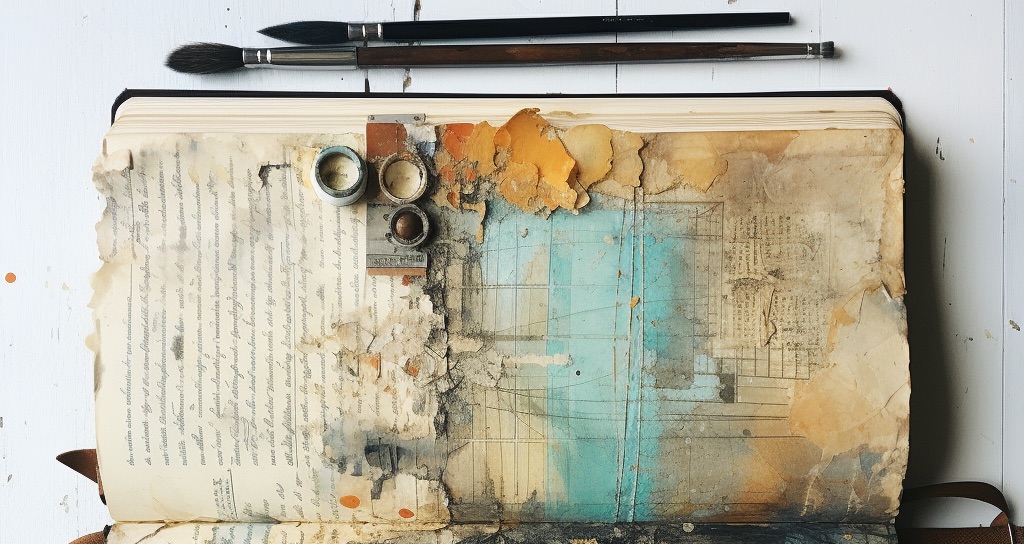
Artists are actors. Existentially, art, artistry and artist are not states nor identities; but doings and becomings. To be an artist means engaging in the act of creation in the way that resonates with your individuality and within the medium that best allows you to self-express and bring form to your ideas.
This perspective doesn’t diminish the importance of authenticity and the desire to deliver work that truly reflects one’s unique voice. However, as we’ve transitioned from a historical context where artists were seen as artisans and craftsmen to the modern notion of artistry as an identity, we may have inadvertently overlooked the fundamental role of the artist as a doer and creator.
There are two dimensions to being an artist as a creative actor or (to force a turn of phrase) as a creative output-er:
- First, there is the most recognizable dimension of public sharing. These are artists who manage to take what they create and deliver it to the world. There is no denying that sharing and shipping art is a crucial component to the artist’s journey. Sometimes it’s completely ok to decide not to ship certain pieces of your work and keep it as your own. That said, to be a “successful” artist demands that we finish, let go and release our creative works. Whether you are a visual artist, musical creator, writer or any other kind of artist, you should strive at regularly shipping work.
- Second, there is the creative process associated with the private and personal output that we are calling tangible artistic creations. A creative process is complex and involves many steps and components. But central to it are the various ways in which ideas take form and get manifested. Whether you call it artwork, draft, production, output, experession, acheivement or creation, it’s about manifesting and making your art tangible and real in at least some initial embryonic form. Art is an idea. It’s an output and expression.
By shifting your thinking of an artist as a muse-infused genius to an artist as a hardworking craftsman, you start to value the work, the process and the daily grind. You start to see simple acts of words on the page, sketches on a canvas and song starters as an integral link between your ideas and your shipped art.
We often frame our artistic goals and projects in terms of the big endpoint or the major acheivement, but true value-creating productivity largely comes from incremental steps and continual progress.
Incrementalism is the patient pursuit of regular progress-making steps towards a goal or objective. Rather than an artist identity or gear we buy, it’s the daily, regular steps that take you from the incubation and sparks to a finished product and shipped artwork.
Regardless of how you do it, incremental progress can and will counter creative blockages, overcome many of our artist cognitive biases, and can lead to meaningful artistic creations that move you and your art forward day-in, day-out.
What’s stopping you? Cognitive Biases Affecting Creativity
As humans we sometimes make irrational choices or engage in actions that don’t seem to make much sense. Cognitive biases are thinking, behaviorial or decision-making errors that can leads individuals or groups to make consistently irrational choices or do skewed actions. Studied in psychology, sociology and behavioral economics, they are often mental “shortcuts” that lead to actions or thinking that deviates from what is objective, best or rational for us.
One of the most common cognitive biases is the confirmation bias and it happens when people tend to seek out, interpret, and remember information that confirms their preexisting beliefs or opinions. For example, if someone strongly believes in a particular political ideology, they might selectively consume news and information that aligns with that ideology while dismissing or ignoring opposing viewpoints, reinforcing their existing beliefs.
Humans (and even animals) make lots of cognitive errors, and artists are no different. Here are some common cognitive biases that can affect creativity and influence an artist’s ability to be output-driven:
- Perfectionism Bias: This bias can lead artists to set unrealistically high standards for their work, especially their first efforts on an artisic project. We tend to be overly critical of our output and its perceived quality. Perfectionism can hinder progress and cause us to spend excessive time on small details (like gear or technique), overthinking, and delay getting started or the completion of projects.
- Availability Heuristic: As artists we might rely on readily available ideas or techniques that have worked for us in the past or heard on social media, rather than being playful or exporatory. While it’s good to have a consistent routine and artistic setup or workshop, we should depend too much on our previous work to define what we might try or stumble into next.
- Status Quo Bias: Artists might resist change and stick to familiar methods and styles, even when they recognize the need for innovation and evolution in their work.
- Anchoring Bias: Artists may fixate on an initial idea or concept and become resistant to deviating from it, even when it’s not working. This can limit their ability to adapt and explore different approaches.
- Stereotype of Artist as Genius: We tend to view other great artists as “geniuses,” meaning infused with innate talent or some divine muse, while lacking that same genius in ourselves. Rejecting the artist as genius stereotype can free to be who you are and release work that is authentically yours.
Cognitive biases are completely normal and affect all kinds of human thinking and behavior. Unfortunately, they can profoundly impact the creative process. They often lead artists and creators to inadvertently limit their potential, pursuing ineffective creative activities and hinder production of meaningful output in the form of tangible artistic creations.
Recognizing and addressing these biases is like clearing a path of obstacles so your creativity can flourish and flow. One of the most significant ways to overcome many of these creative cognivie biases I believe is to shift how we define an artist and embrace incrementalism.
The “Nature” of Being an Artist
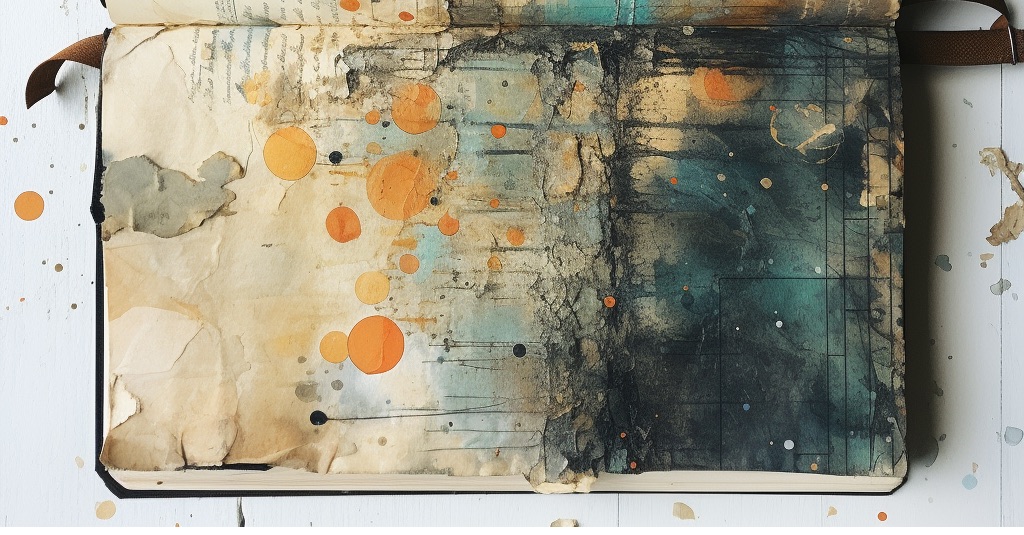
The meaning and understanding of what is and what it means to be an “artist” has evolved over centuries. Interestingly, up until the Renaissance, the concept of an “artist” as we understand it today did not exist. Instead, during ancient times and during the Middle Ages, individuals who created art were craftsmen or artisans, and their work was often considered a trade rather than an expression of authentic personal creativity.
Our modern understanding of an “artist” as someone who creates art for the sake of self-expression and authentic creativity emerged during the Renaissance in Europe, particularly in Italy. Figures like Leonardo da Vinci, Michelangelo, and Raphael played pivotal roles in shaping this new perception of artists. During this period, there was a shift in the perception of art, and artists began to be recognized as individuals with unique talents and creative visions. Combined with the rise of individualism in religion like Protestantism and the Scientific Method based on rationality, we witness a transformation of art from craftsmanship to a form of personal expression and individual creativity.
So, the term “artist” as we use it today began to take form during the Renaissance, with the transformation of art from craftsmanship to a form of personal expression and creativity. This transformation marked a significant turning point in the history of art and the concept of the artist.
Interestingly, we also see the rise of authenticity as a new modern value and ethical ideal. Instead of simply fulfilling a role in society or finding meaning through God or your religion, individuals felt a need to be “true to yourself” and seek out and live an authentic life. Authenticity became a dominant value for individuals in modern society, though individuals haven’t been given much to guide this search besides pithy one-liners and bumper sticker life philosophy.
While a critical appraisal of authenticity is well-outside the scope this post, it is worth acknowledging that contemporary artists have become derooted from identifying with the traditional role of the artist as a craftsman and are now expected to embrace and perform under this new mode of the artist as an authentic self. Under the guise of authenticity, we are expected as artists to not only create beautiful things but embody our lives and our artistic creations with a genuine form of self-expression too.
From Flow to Tangible Deliverables
Like it or not, success often hinges on regularly releasing creative works. In my own experience as an artist and creative and my on-going research into the science of creativity and peak performance, there are two essential ingredients we should all prioritize in our creative processes:
- Getting Into Flow
- Delivering Tangible Artistic Creations
Let’s look at each of these ingredients one-by one.
Flow: Enjoyable, Immersive Mental Experience of Peak Creative Performance
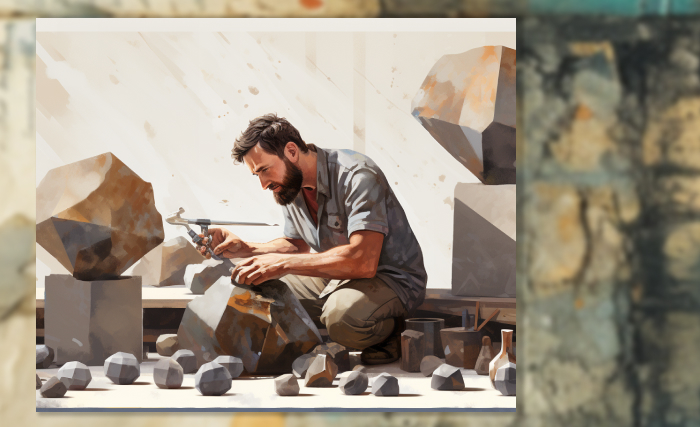
Flow is the powerful mental state we get into when we become engrossed in an enjoyable challenge or highly engaging activity. In sports, it’s called “getting in the zone.” It is now believed to be a mental experience found widely, including at work, at school and, of course, in the arts. Besides being immersive and enjoyable, the state of flow is a form of peak performance and often carries the added benefit of delivering our best work possible for each of us.
Besides being something we can experience, flow has an operational definition too. According to Mihaly Csikszentmihalyi, one of the chief researchers on the topic, flow results from deploying our skills at or near our peak abilities. State of flow tends to occur in peak challenges, like a hard sports competition or attempting new artistic expression. When a challenge is too mundane or easy, we get bored. But when it is beyond our abilities, we fail or give up, often with hurt feelings. When a challenge pulls at peak abilities or challenges us fully, we get triggered and enter into the state of energized focus and peak performance called flow.
Flow matters for anyone pushing at their limits but is especially for creatives, since flow offers an optimal state where we are positioned to do and create our best work.
A deeper dive into the science of flow has revealed a number of benefits to flow not the least of which is that it makes us feel happier. I personally believe this comes from the combination of momentary exprerience and delivering new and innovating work.
While it is still somewhat difficult to track flow, I have found a creative, professional, and even biological life centered on flow to be incredibly rewarding and fulfilling. Flow has helped me orient my music making, enjoy running and even improved my writing too.
As artists, prioritizing and getting into flow regularly is essential. Flow can lead to enhanced productivity, attention to detail, and higher quality output. In flow, we experience deep concentration and even a sense of selflessness and timelessness. Our vocal uncertainties and underlying anxieties disappear and we simply let go and start creating. Our creativity for a period of flow becomes effortless and fluid.
Your routine, perfecting your skills, eliminating distractions, and creative organaization and especially the state of flow are strong enablers of creative ouput. However, what ultimately drives the artist’s way and maximizes our creative potential is output. An artist can consistently attain a flow state but may struggle to harness it effectively to produce in ways that effectively move their work beyond gestation.
That’s where tangible artistic creations come in.
Tangible Artistic Creations: Delivering Meaningful Output
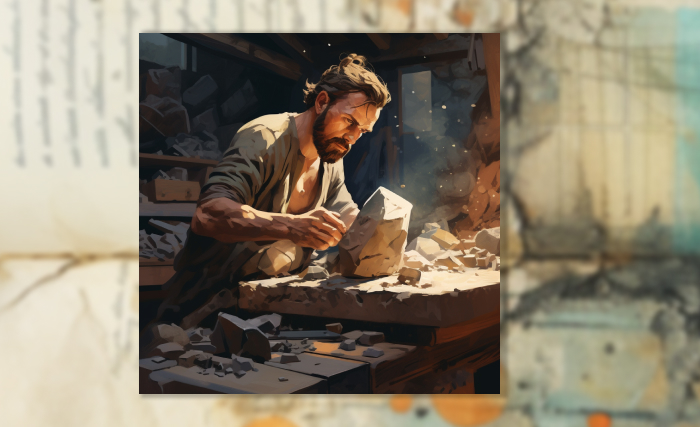
More than anything we as artists we need to make real and manifest our creative works in tangible, regular ways. Tangible Artistic Creation or “TAC” refers to a concrete and physical embodiment of our imaginative ideas, emotions, and intentions within a chosen artistic medium. It is both the outcome and the essence of the creative process, culminating in real, tangible artifacts that we can experience and share.
Imagine an artist as a skilled sculptor in a workshop. The artist carefully selects rough stones, each representing an idea or creative concept. With precision and dedication, they organize these stones, sorting through their thoughts and inspirations. Then, with the first chisel strike, they begin the process of carving and shaping, gradually transforming the raw material into a work of art. Stroke by stroke, cut by cut, they refine their creation until it stands as a completed artistic work, ready to be unveiled to the world.
Like the stone sculptor, your own journey from ideation to shipping a piece of art should also be centered on the creation of tangible, meaningful artistic outputs.
Consider prolific creators like writer Stephen King, who meticulously crafts paragraphs and chapters in his novels, or the renowned painter Pablo Picasso, who filled canvases with an array of sketches and paintings, all manifested their work regularly and exemplified the dedication to tangible artistic creations on a regular basis.
TACs are your Relevant Artistic Manifestations. They represent tangible and pivotal elements in the creative process. They are real things which you create and which move your artist projects forward. These manifestations are unique to your chosen art form and the associated creative journey, serving as the most pertinent artistic expressions at each stage of your work. They hold significance both in your present creative endeavors and for your eventual audience.
Your TACs naturally vary depending on your specific art form. Let’s look at two examples from my own life:
TACs for Music Makers: For music production and composition, I’ve found that two core activities stand out in my creative process: 1. Initiating and creating new melodies, songs, demos, and beats, and 2. Refining, editing, and completing songs, albums, and scores for eventual release. In either case, the central TAGs are the songs and riffs themselves. My primary focus is generating fresh music ideas and bringing existing ones to fruition. The state of flow is crucial throughout my music-making journey, particularly when starting a new track or fine-tuning existing compositions. For music creators, songs are your central and defining TAGs.
Check out Finding Your Musical Flow: Lessons from a 30-Day Songwriting Challenge for a quick start approach and some pratical advice
TACs for Writers: As a writer, our most pertinent artistic outputs go beyond mere word counts and pages. While word count may serve as a superficial metric, the true essence lies in contributing to a finished (or at least potentially completable) writing project, such as a blog post or a chapter. What matters most in my opinion as a writer is delivering fully-articulated ideas in complete sentences and multiple paragraphs. In order to get there you often need to generate new ideas, learn stuff, do research and capture it in smart notes. You also often need to make outlines, consider the core thesis and figure out your vision for the written piece. Editing and revising are crucial too. While these supportive and finishing activities are important, for writing, my biggest target TACs are blog posts, chapters and paragraphs.
TACs serve as a measureable and tangible outcome of your creative process.
In both these examples, my main objective is to focus my time, energy and intentions on the most benefitical and immedidate output-oriented activities towards what I want to acheive. For music, I want to finish songs. For writing, I want to publish blog posts and finish chapters.
The point is to ship creative work at all levels.
Conclusion: Overcome Artistic Cognitive Biases through Incrementalism and Tangible Artistic Creations
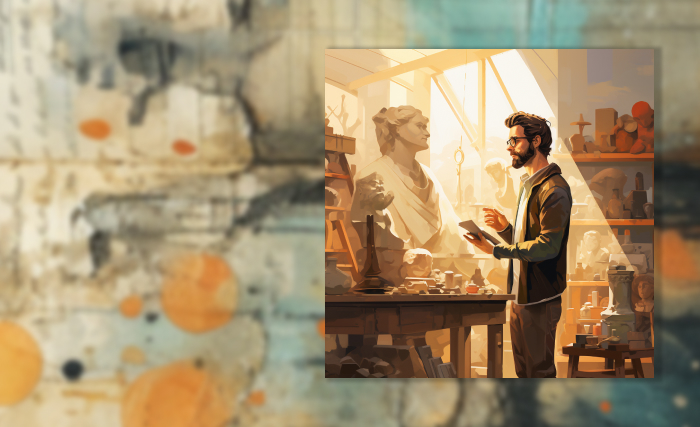
Art creates a kind of momentary special “world.” I personally believe our mission as artists is to explore and play until we stumble into those special magical artistic worlds and then work as craftspersons to hone, perfect and release our beautiful artistic works.
While there is a place for the more mystical and mysterious sides of creativity, authenticity and art, I sometimes find dwelling in such vague expressions of what art is and how to cultivate such a profound artist self misleading and ineffective. I define my artist self as a curious someone who strives to learn and grow constantly and create and share my artwork regularly. It’s important to find ways to get new ideas and discover novel and beatiful ways to create art.
It’s also important even essential to regularly and continuously create and ship your artistic work. Beyond the mysterious side of art and artist lies a deep history and tradition based on hard work and tangible output. This is at the heart of what I called here “Tangible Artistic Creations” or “TACs.” These orienting KPIs of artistic output deliver meaningful expression to what it means to be artist and act as a constant catalyst to turning ideas into real things.
Your TACs also serve as powerful tools for overcoming the artistic cognitive biases we previously discussed:
- Artist as Doer: First and foremost, they shift our mentality away from “Artist as an Identity” and grounds it a more traditional definition of an artist as a craftsperson and as a doer. TACs act as anchors for artists, grounding our creative efforts in specific, measurable goals. They provide artists with tangible, meaningful reference points for your creative progress. At the start it’s a crappy song demo or a lame first draft. Define your TAG initially as “just” an initial song or “just” a first draft of a blog idea, and then do it.
- Incremental Shareable Progress over Outcome: TACs help artists prioritize the process of creation over the end result. While the outcome is essential (and arguably is the whole of it all), artists should learn to live in the moment through flow, appreciate the journey, and value incremental progress throughout the process. You may or may not want to share them, but ideally the output you create of each phase of your creative process should be shareable in some form, for example as blog draft document or a song demo MP3 file. TACs works because they coalesce your activities towards an outcome and invite you to improve and make them better over time. By making them better over time, you get one step closer to finishing and releasing them too. Having a shareable output means you can share it with a collaborator or just release it as is.
- TACs combat Perfectionism: TACs act as a measureable way to move forward even when you aren’t sure what you are making is any good. First drafts aren’t great. Song demos got issues. But in both cases you completed a tangible steps and have manifested something real that you can iterate and improve on. By making regular tangible outputs central to your creative process you have pragmatically dealt with both perfectionism and imposter syndrome. As you shift into other phases of your creative project, you’ll want to shift the specific nature of your TACs too. When it came to finishing my last two albums, I shifted from making new songs to becaming obcessed with making minor and major revisions to each of my selected songs and then rating them over time. My TAC became “another finished version” my current songs. Over time, each version got me closer to completion. TACs encourage artists to set achievable goals and milestones. Instead of endlessly pursuing perfection, we as artists can concentrate on completing our TACs, ensuring they produce tangible improvements and deliver on our final artistic creations without getting bogged down.
There are many parts to becoming an artist and various components to an effective creative process.
It’s easy to get caught up in the details and the “getting ready to create” phase. I fell victim to this mistake part-way through creating my journey to finishing first music album.
It’s true that no matter your chosen artistic discipline, you need to develop certain skills, mental models and personal taste. It’s also crucial to establish an artist or “maker” schedule designed to foster distraction-free deep work. You need to allot and dedicate necessary time and effort to immerse yourself fully in your creative process and aim at reaching and maximizing a state of flow.
Artists also need tools and a process for creative organization and finishing too.
Creativity is a messy, nonlinear process. Creativity is a messy, nonlinear process. We need to recognize cognitive biases in our thinking and acting that limit our creative potential. Regardless of your phase or artistic medium, I believe all artists can benefit from one simple idea: Make tangible your artistic creations each and every day.
Good luck and happy creating!
AIDA (AI Disclosure Acknowledgement): The following written content was written by me with the assistance of an AI-based system (ChatGPT). Specifically I used it to help me in some aspects of the pre-writing phase (phrasing, outlining), drafting a few individual points, and various clarification improvements. Images were generated using an AI-based system (Midjourney) and edited by me.

